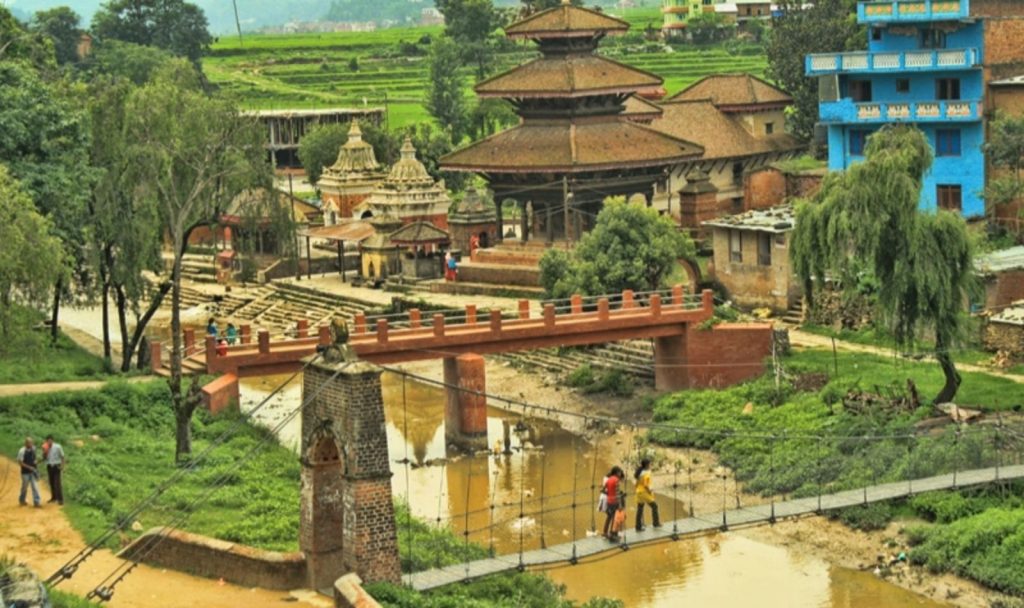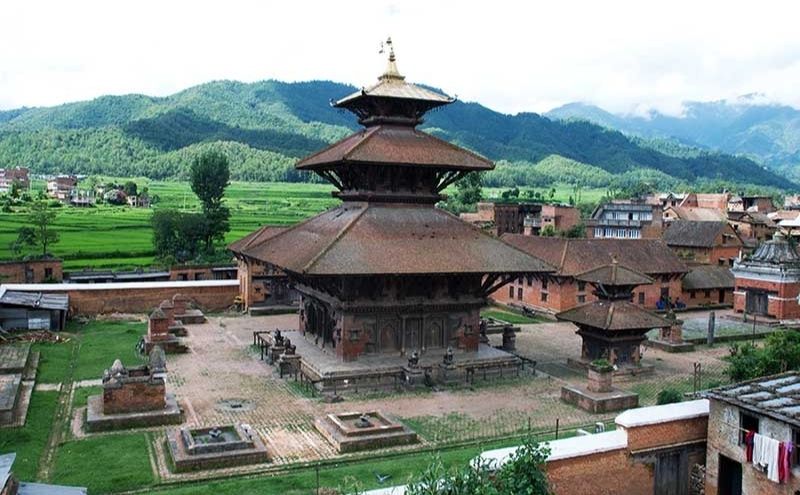Panauti is one of the oldest towns in Nepal consisting of many temples and monuments. It is a small state and has a population of about 15000 people. This old town is situated at the confluence of the two rivers Rosi and Punyamati. In addition to these two rivers, third river name Lilawati also converges making tri junction called Triveni. It is also regarded as the Prayag Tirth of Nepal. This historical site consists of variety of Buddhists and Hindu religious monuments making it one of the most important medieval sites. Tourists will often find here colourful stones, petals and other items laid out on the pavement to welcome everyone with great hospitality. The town is listed as the UNESCO tentative site since 1996.


Panauti is located in the Kavre district of the Bagmati pradesh of Nepal. It is about 32km Southeast of the Kathmandu valley. The town of Panauti is a melancholic chock a block of wooden houses, public halls, temples, shops, shopping mall and monuments all nested together resembling the shape of the fish in the laps of Himalayan greenery. On the north east of the town lies the peak of the Gorakhnath hill. There are occasional courtyards and public squares. Unlike Kathmandu, the streets of Panauti are still safe from the excessive encroachment of the travellers.
Panauti is one of the oldest towns in Nepal. It was a small state given by the king Bhupatindra Malla as a dowry to his sister. This town was founded by Ananda Malla between 1274-1310 AD, however others believe that it was founded by King Harisingh Dev as the golden scripture dated 1385. The golden scripture is located within the Indreshwar temple. The town was once the busy trading hub during the era of the kings and the queens. It was a separate town until the unification of Nepal.
Durbar square of Panauti is still unknown to visitors from the world. It is also the heritage site which has its own cultural values and norms. The main monuments of this palace are Indreshwor temple, a museum and King’s palace. There are many art crafts and remnants such as stone taps, bricks, water wells, coins and the pond. There are still some hidden monuments under the earth somewhere, waiting to be dug out and explored.
It is one of the oldest temples of Nepal. The temple is also known to be the largest and tallest pagoda style temples in Nepal. It was originally built over the lingam in 1294 making it the oldest surviving temple of Nepal. It reflects the true essence of Newari culture and architecture in its three wooden storeys. The temple is carved with the distinct Nepalese wood-carvings and architectures. The upper part of the temple is hung with pots and pans. They are the offerings from the newly married couples hoping to have a happy and prosperous family life. The temple is located inside the territory of the Durbar square.


The town of Panauti celebrates as many as 28 festivals. Some of the festivals are celebrated on a monthly basis whereas some come once in a 12 years. The events and festivals that are celebrated here are listed below:
It is Nepal’s own chariot festival Panauti Yatra or Jay Punhi. The jatra is celebrated for about 3 days. The chariots from many temples across the town start their journey from the front of Indreshwar temple and meet at the river bank. The festival ends with the deafening cheers from the devotees at the bank of the Punyamati river. It is the major festival of town celebrated every year during the month of May-June.
It is the festival that is celebrated once every 12 years. The mela is celebrated for about a month ( In a month Magh according to lunar calendar) in which the hindu devotees from all round the world come here to take a dip in the tri junction of Triveni. The mela has its own significant religious value. According to Mythology, Lord Indra, the God of Heaven was suffering from an incurable disease. He meditated for about 12 years to please Lord Shiva. As Lord Indra used to bathe in the Triveni Ghat, Shiva decided to mix the nectar of his cure in the water of Rudrawati. When Indra bathed in this holy river, he was instantly cured. Since it is believed that every 12 years, the nectar of cure of all disease flows through this river.
Panauti is also believed to be the city of Nags(serpents). The serpent from Taudaha, Chobar comes to visit the temple of Lord Shiva during this mela. The serpent stays in this tri-junction for one whole month and leaves after the completion of Mela. It is believed that if we take a bath in Triveni ghat during this festival, all our sins will be washed away and we will receive salvation.
This festival is celebrated both by the Hindus and Buddhists community of the Panauti. It is celebrated to commemorate the Great Prince Mahasattva, who sacrificed his mortal body to feed the hungry and starving tigress. The festival is held city-wide but the main rites and rituals are performed at the Namobuddha monastery.
This dance is the traditional masked dance performed as the devotion to the goddess Shakti.
It is also the form of traditional and cultural masked dance performed as the devotion to the Goddess Durga.
These dances are performed during the early June by burning the old masks and throwing them into the holy water. They are part of the age-old cultures of Panauti. Visitors can appreciate these dances in the Durbar Square of the town and other parts of Kathmandu Valley as well.
We can visit this traditional and oldest town of the country by public transportation that runs from the new bus park of Kathmandu valley.
Shopping is my option in contrast to Red Bull. Regardless…


Hundreds of years of preservation and perseverance, nourished and timely…
Among the many 12 years festivals Nepal has, Lha Phewa…